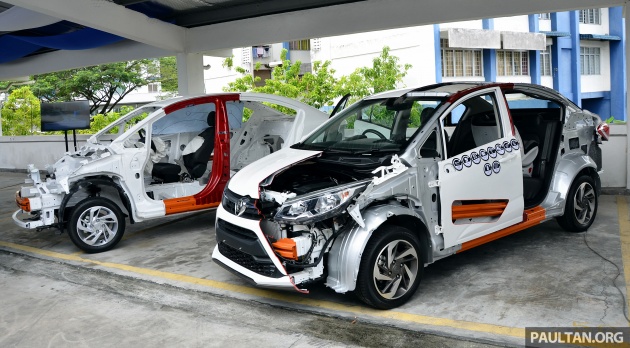One of the primary concerns for Proton’s new vice president of manufacturing, Yoshiya Inamori, when assuming his new role, is quality. The national carmaker has been experiencing less than satisfactory market sentiment as of late, some of which are attributed to customers’ perception on the quality of its vehicles.
“Because the reputation or variation of the market outcome (involving) customers (relating to) our Proton vehicles for quality, I see (it as) not so good,” he said.
In an attempt to rectify the issue, Inamori revealed a number of steps that have or will be taken. He acknowledges that there is a gap in terms of quality from Proton’s competitors. Efforts include carrying out surveys to better establish the difference in quality between market players to gauge Proton’s position. This will allow it to better set quality targets, which he can then strive towards.
“Now, we are doing some survey work, checking the competitor’s quality. We see some of the gap between the competitors, so in order to overcome the competitor’s quality issue, we are setting the quality target,” he explained.
Aside from observing its competitors, internal key performance indexes (KPIs) have also been revised to promote improved quality. These improvements will be introduced as running changes from model to model (as opposed to through major facelifts), as the company is selling cars every day, according to Inamori.
“My job for the coming months is to overcome the competitor’s quality level. I setup KPIs for the quality, internally, so we have already started to improve our quality KPIs,” said Inamori.
AD: Drive the Proton model of your dreams. Submit your details and Proton PJ will get in touch with you.
Looking to sell your car? Sell it with Carro.






















AI-generated Summary ✨
Many comments express skepticism about Proton's efforts to improve quality, citing past repeated failures and ongoing brand trust issues. Some feel Proton’s quality still lags behind competitors like Toyota and Honda, with complaints about build quality, aftersales service, fuel consumption, and reliability. Others highlight that Proton's image has been damaged by years of poor quality and design problems, making it difficult to regain consumer trust. Several commenters suggest Proton needs to prioritize quality right from the design stage and improve manufacturing efficiency, possibly through better collaboration and technology sharing, as seen with Perodua and Geely. Overall, sentiments are cautiously optimistic but emphasize the long road ahead for Proton to truly close the quality gap and restore its reputation.